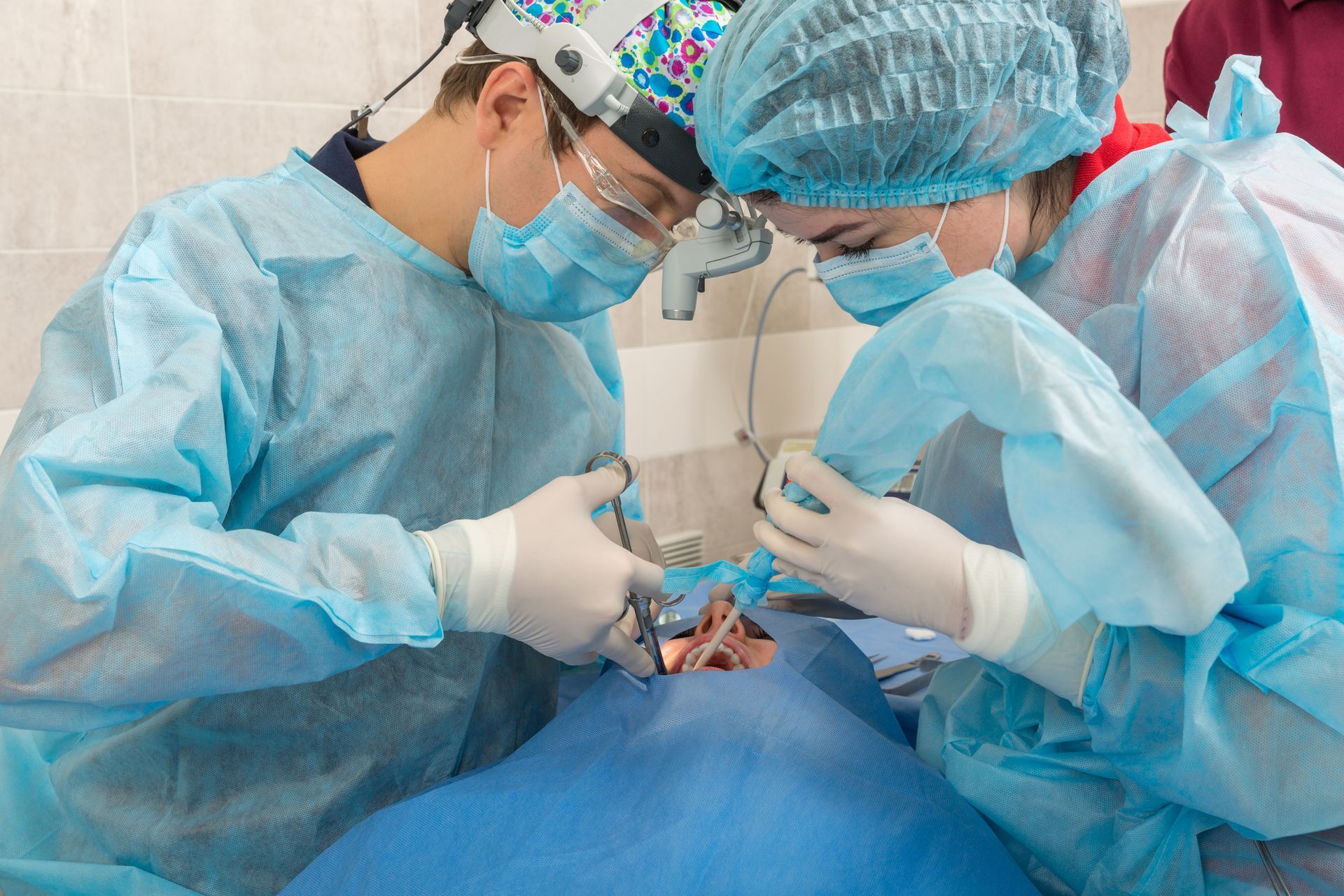The Evolution of Dental Anesthesia: Towards Pain-Free Dentistry

In the fascinating journey of dental care, one of the most significant milestones has been the development of dental anesthesia, paving the way for pain-free dentistry. Over time, advancements in this field have transformed the dental experience, offering patients comfort and ease during procedures that were once associated with discomfort and anxiety. This evolution reflects the ongoing commitment of dental professionals to enhance patient care and ensure a more pleasant visit to the dentist.
Journey through Time: The Evolution of Anesthesia in Dentistry
Anesthesia in dentistry has come a long way from its crude beginnings to the sophisticated methods we see today. In the early 19th century, the discovery of nitrous oxide offered dentists the first viable option for pain relief, marking the birth of dental anesthesia. Subsequently, the introduction of local anesthetics like procaine in the 20th century considerably improved the comfort of dental procedures. Over the decades, continuous advancements have led to the development of more effective and less intrusive techniques, significantly enhancing the patient experience.
The transition from traditional to
modern techniques in dental anesthesia has been revolutionary. Initially, the use of local anesthetics was a rudimentary process, often leading to discomfort during application. Today, innovations such as topical anesthetics for pre-numbing, computer-controlled delivery systems for precise administration, and various sedation options have transformed dental procedures. These advancements not only ensure a painless experience but also contribute to the overall efficiency and success of dental treatments.
Understanding Dental Anxiety: Its Impact and the Need for Advancement
Dental anxiety is a prevalent issue, affecting a significant portion of the population. It not only discourages individuals from seeking routine dental care but can also have severe implications for oral health. Neglect due to fear of pain during dental procedures can lead to the exacerbation of dental problems, requiring more intensive and, paradoxically, potentially more painful treatments in the future.
Anesthesia plays a critical role in mitigating dental fear. By assuring patients of a painless experience, modern anesthesia techniques significantly reduce anxiety levels. This, in turn, encourages regular dental visits, promoting better oral health. The emergence of various anesthesia options allows dental professionals to tailor pain management strategies to individual needs, ensuring comfort and minimizing apprehension. At South Temple Dental, the focus is on employing these advanced techniques to provide a comfortable, anxiety-free experience for all patients. In an area like Downtown Salt Lake City, where the practice is a pivotal part of the community, the importance of such patient-centered approaches in dentistry cannot be overstated.
The evolution of anesthesia in dentistry from its rudimentary beginnings to its current sophisticated forms has been a game-changer. Understanding and addressing dental anxiety through advanced anesthesia techniques is crucial for promoting oral health and ensuring a positive dental care experience.
Innovations in Local Anesthetics
The introduction of local anesthetics has been a cornerstone in pain management during dental procedures. Notably, the development of topical anesthetics, used for initial numbing of the gum area, has significantly improved patient comfort. These anesthetics, applied directly to the site of injection, help minimize the discomfort of needle penetration, easing anxiety for needle-phobic patients.
Among local anesthetics, articaine has gained popularity over lidocaine, the traditional choice. Articaine's superiority lies in its enhanced potency and ability to diffuse through bone and soft tissue more efficiently. This results in a more effective and longer-lasting numbing effect, which is particularly beneficial in procedures involving areas that are traditionally harder to anesthetize.
The Rise of Computer-Controlled Local Anesthetic Delivery Systems (C-CLADS)
Computer-controlled local Anesthetic Delivery Systems (C-CLADS) represent a significant advancement in painless injections. These systems allow for precise control over the flow rate and volume of anesthetic, making the injection process virtually painless. The slow, steady administration of the anesthetic not only enhances patient comfort but also improves the effectiveness of numbing.
Patient experiences with C-CLADS have been overwhelmingly positive. Many report a dramatic reduction in anxiety and discomfort compared to traditional syringe methods. This acceptance is a testament to the system's effectiveness in creating a more pleasant dental visit.
Exploring Sedation Dentistry: Types and Benefits
Sedation dentistry offers additional options for managing anxiety and pain. Nitrous Oxide, commonly known as laughing gas, provides a mild sedative effect, allowing patients to stay awake but feel relaxed. Oral sedatives, taken prior to the procedure, help reduce anxiety levels, while IV sedation offers deeper sedation levels, suitable for more invasive procedures or those with severe dental anxiety.
The role of sedation in dentistry encompasses more than just pain management; it significantly reduces anxiety and alters pain perception, making lengthy procedures seem shorter and more comfortable. Choosing the appropriate sedation technique depends on various factors, including the patient's anxiety level, health history, and the nature of the dental procedure. This customization of pain and anxiety management strategies underlines the patient-centered approach embraced by modern dentistry, aligning perfectly with the ethos of practices such as South Temple Dental.
The innovations in local anesthetics, the introduction of C-CLADS, and the expansion of sedation dentistry options have collectively transformed the patient experience. These advancements not only enable a painless procedure but also mitigate the profound impact of dental anxiety, ensuring that a visit to the dentist is no longer a source of fear.
The Psychological Impact of Painless Dentistry
The advancements in dental anesthesia have not only enhanced procedural efficacy but have profoundly impacted patient psychology. Numerous studies delineate the correlation between painless dentistry practices and improved patient perceptions toward dental visits. Individuals who previously avoided the dentist due to fear of pain now exhibit an increased willingness to seek routine care, thanks to the promise of a painless experience. This shift is monumental in enhancing oral health outcomes as it promotes regular check-ups and timely interventions.
Patient testimonials further illustrate this positive shift. Many recount dental appointments filled with dread that have transformed into manageable, even pleasant experiences. Satisfaction metrics, soaring high, underscore the significance of painless procedures in improving patient compliance and overall care satisfaction.
The Future of Anesthesia in Dentistry: What Lies Ahead?
As we peer into the horizon, the future of dental anesthesia appears both promising and innovative. Emerging trends point towards further refinements in the effectiveness and comfort of anesthesia delivery. Virtual reality (VR) is on the cusp of being integrated into dental practices, offering immersive distraction techniques to alleviate patient anxiety during procedures. Similarly, advancements in artificial intelligence (AI) promise personalized anesthesia protocols, optimizing pain management for individual pain thresholds and physiological responses.
The potential of these technologies in enhancing patient comfort is vast. Virtual reality can transport patients to calming environments, effectively distancing them from the ongoing procedures, while AI-driven systems may soon accurately predict and administer the exact amount of anesthesia required, minimizing discomfort and recovery time. Case studies from pioneering dental practices adopting these advanced techniques signify a leap towards an era where dental treatments are not merely bearable but are genuinely devoid of discomfort and fear.
Aligning with South Temple Dental’s Ethos
In this landscape of evolving dental anesthesia, practices like South Temple Dental stand at the forefront, championing the transition towards a pain-free dental care paradigm. Such advancements dovetail seamlessly with South Temple Dental’s commitment to providing care that is not only effective but empathetic. The adoption of the latest anesthesia techniques and exploration of future technologies reflect a deep-rooted dedication to patient comfort and the alleviation of dental anxiety. In a profession historically riddled with the specter of pain, the strides made toward painless dental procedures herald a new dawn. Anesthesia in dentistry, continually evolving, now offers not just a reprieve from physical discomfort but a bridge to better oral health through reduced anxiety and fear.
As we look towards a future rich with potential, the ethos of care, comfort, and patient-centric approaches remain the guiding light for practices dedicated to transforming dental visits into positive experiences.
Experience the future of painless dentistry with South Temple Dental. Schedule your appointment today and take the first step towards a brighter, healthier smile.


Connect With Us on Facebook
Areas We Serve
Downtown Salt Lake City
84103, 84116, 84104, 84101, 84111, 84102, 84112, 84113, 84108, 84105, 84115, 84104, 84103
Business Hours
- Monday
- -
- Tuesday
- -
- Wednesday
- -
- Thursday
- -
- Friday
- -
- Saturday
- Closed
- Sunday
- Closed
All Rights Reserved | South Temple Dental
Dentist in Downtown Salt Lake City, Utah
